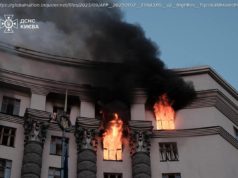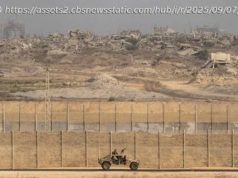How long can someone survive after being buried alive?
So far, more than 50 people have been rescued from rubble after the temblor, Mexican President Enrique Peña Nieto said in televised remarks Wednesday night.
How long can someone survive after being buried alive?
« It keeps getting redefined, » said Dr. Sanjay Gupta, CNN’s chief medical correspondent.
Several factors are key, said Gupta, who has covered the aftermath of disasters around the world. Most critical: whether the person has air. Access to water and food is also important. Some survivors, Gupta said, have reported drinking rainwater seeping in through the rubble.
« The people who tend to survive the longest, it depends a lot on the individual, » Gupta said.
We don’t know much yet about the people rescued so far in Mexico. But here’s a look at other cases of survivors pulled from rubble after disaster struck:
Kenya: Painstaking rescues to protect survivors
A hand reached out from the rubble.
It was a sign of hope, six days after a building collapsed in 2016 as heavy rains hit Nairobi, Kenya .
The woman was alive, but getting her out was a painstaking process. Rescuers moved slowly to protect her and prevent further injury, Kenyan Red Cross official Anthony Mwangi said.
That’s important, Gupta said. Toxins can build up when limbs are compressed for a long time and muscles start to break down. When the pressure is removed, toxins can flow rapidly through the body.
« When someone is trapped and they are pinned down, rescuing them is not as simple as pulling rubble off of them, » Gupta said. « You can find somebody, and they could be alive, and then they could die during the actual rescue if it’s not done correctly. »
The seven-story residential building collapse killed dozens of people. But authorities said more than 100 were saved, including a baby girl who was trapped for 80 hours before rescuers pulled her out.
A military team using specialized equipment detected breathing under the rubble and located 6-month-old Dealeryn Saisi Wasike.
Her positioning apparently helped her survive the collapse.
Soldiers and EMTs quickly dug into the debris and found the child, who was wrapped in a light blue blanket, inside a bucket.
Nepal: Cries led soldiers to baby
The baby’s eyes were tightly shut as soldiers pulled him from the rubble of his home and held him in the air.
Four-month-old Sonies Awal spent 22 hours buried after a 7.8 magnitude quake hit Nepal in 2015.
Soldiers had searched for him the night before but gave up after a few hours when they saw no sign of him. The boy’s father also began to lose hope of finding his son alive — until, from under the rubble, he heard faint cries.
The baby was covered in dust when rescuers pulled him to safety, but he was largely unharmed. At the hospital, doctors said he had suffered minor bruising and a small cut on his thigh.
Nearly 9,000 people were killed in the quake and a 7.3 magnitude aftershock that followed.
One girl’s remarkable recovery
Nepal, a year after the quake: ‘Help us’
Bangladesh: Seamstress becomes survivor
Reshma spent 17 days buried underground in pitch-black darkness after the factory where she worked collapsed, killing more than 1,000 people.
« I’d crawl, tire and sleep. I would wake up and crawl again, » the 19-year-old seamstress recounted, her voice barely audible, as she spoke to CNN from a hospital bed in 2013.
« I told God, ‘Take me, if that’s your will. If not, then save me. But don’t leave me here like this.’ «
Reshma said she survived on dry food and water that was tossed into the rubble in the first days after the collapse.
« I ate biscuits and water, » she told rescuers, according to state media, « but the stock dwindled two days ago. »
Her youth may have worked in her favor, Gupta said at the time .
« The body can be very good at preserving itself. »
Chile: ‘We are fine in the shelter, the 33 of us’
The story of 33 miners trapped inside a Chilean mine and the harrowing efforts to rescue them drew global attention in 2010.
The collapse of the main ramp into the San Jose mine left the men trapped 2,300 feet underground.
For weeks afterward, rescuers weren’t sure whether the miners had made it. Then the men managed to send up a note saying they were alive.
Written in Spanish in red ink, the note said, « We are fine in the shelter, the 33 of us. »
After 69 days and an underground rescue mission that cost up to $20 million, the 33 miners were freed.
Where are they now?
How best of man, machine saved Chile’s miners
Haiti: Pulled from market wreckage
Almost a month after a 7.0 magnitude quake hit Haiti in 2010, rescuers found 28-year-old Evan Muncie .
At the time, his family told staff at a University of Miami field hospital that he was trapped in the wreckage of a market where he sold rice.
It is believed Muncie had some access to food and water, although details remain murky, Gupta said.
Muncie’s story was one of countless tales of survival after the devastating quake, which killed hundreds of thousands of people .
Another survivor story: a 4-month-old baby who spent four days alone in the rubble and was unconscious and extremely dehydrated. No one knew if she would live or die.
In 2015, CNN spoke with the girl and her family from her new home in Miami about the miracles it took to save her life .
United States: Last person pulled from towers on 9/11
Rescuers found Genelle Guzman-McMillan 27 hours after the north tower of the World Trade Center in New York collapsed on top of her on September 11,2001.
Guzman-McMillan, who was working for the Port Authority of New York and New Jersey at the time, was buried with her head stuck between two concrete pillars and her right leg crushed.
She was the 20th survivor pulled from the rubble, the last one rescuers were able to save.
« I thought I was going to die, » she told CNN in 2006 . « When I saw that it became dark and no one came, and I’m not hearing any noises, nobody around, I thought, I’m not going to make it. I’m going to die here.






